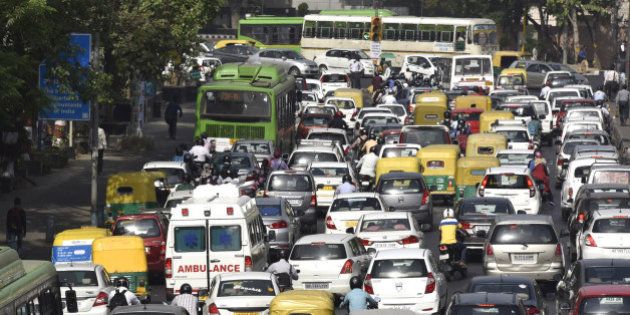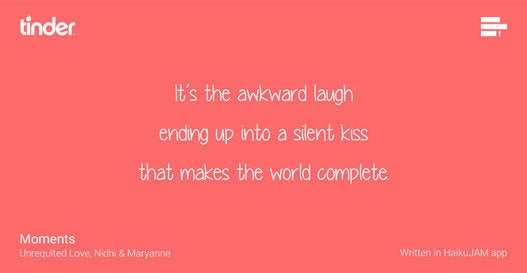
Pity the politician who starts blaming the media. Shooting the messenger is the surest sign of the politician’s frustration and failure.
The Delhi government’s transport minister Gopal Rai says there is a “wrong perception” that Odd Even Round Two has been a failure. The cause of this wrong perception, he says, is a false perception that has been created by the media.

He says that editors sitting in air-conditioned rooms have been passing judgements on the odd-even scheme. The statement is not only a sign of the minister’s arrogance but also of his poor grasp of logic. Even to sit in air-conditioned offices, editors have to go from home to office. Editors travel the same roads of Delhi as AAP politicians. And I bet, minister Rai’s Toyota Innova, purchased with tax-payer’s money, is as air-conditioned as his office in the Delhi secretariat.
There’s another sign of the failure of Odd Even II. Have you noticed how little advertising the Delhi government has employed this time, as compared the Odd Even I? Had the scheme been succeeding, they would have hammered it in on radio, TV and newspaper frontpages, every single day. In Odd Even I, FM radio channels were reduced to a non-stop Arvind Kejriwal monologue, with a few songs in between.
But minister Rai sees a media conspiracy. Why is it, he asks, that the media was constantly showing seven locations of traffic congestion in Delhi, and not the others?
Odd Even I was supposed to reduce pollution, but failed to do so.
Odd Even II dishonestly shifted the goalpost to traffic congestion. Keeping half the diesel and petrol cars away from the roads should reduce traffic congestion by a huge margin.
If despite such car rationing there are as many as seven intersections with traffic congestion, clearly, Odd Even II is failing.
Even if he blames the media, at least the minister admits that there is a perception that Odd Even Dobara was a failure. Truth is, Odd Even Round One was also a failure. Its purpose was to reduce pollution, which according to most studies it did not, and yet the AAP government unwisely repeated the Odd Even experiment. It hoped that like the first round, it would make Delhites happy by reducing traffic congestion. That aim, too, went out of the window this time, with very little reduction in traffic congestion.
Here’s one statistic: the number of cars passing through the Delhi-Noida DND toll plaza reduced by 6% on Monday, 18 April. That’s a marginal decline, not enough to justify the inconvenience, hassle, illegality and ad budgets of the Odd Even Scheme.
Lies, white lies and statistics
There’s pollution data that you can use to show that pollution didn’t decline and there’s data that will show it did decline. When we have our noses, why do we even need data? The decline in pollution, if at all it was there, was not substantial enough for our noses to register. The changes in weather data, as compared to last year, are so negligible that they are better explained by the weather than by odd-even car rationing.
Here’s one example of how cherry-picked data is dishonestly picked to create headlines that will drive the sense that odd-even is reducing pollution. We have been told that “ozone peaks” were lower than this year. The headline suggests odd-even was responsible for the marginal decline in surface-level ozone (O3). A beautifully misleading euphemism for marginal has been used “lower peaks”. The story quotes a study by the Centre for Science and Environment that blames cars for O3 levels.
How, then, do we explain the wide-ranging fluctuations in ozone levels during the odd-even fortnight? Simple, the story blames the weather for it.
So when ozone levels rise, the sun is blamed. When it falls, credit goes to odd-even. What is completely omitted is that O3 levels have generally been lower in 2016 over 2015, even before the odd-even scheme.
Also notice how the debate has shifted from PM 2.5 to O3!
This is the sort of headline management that the AAP did better in Odd Even I. Perhaps that had something to do with its more generous advertising budget at the time. Unable to manage the headlines about Odd Even II, minister Rai si complaining the media was busy declaring Odd Even a success or failure from day one this time. He didn’t have this complaint when the media was all ga-ga over Odd Even I.
Conspiracy theory
Minister Rai of course found a conspiracy to blame pollution on. The number of fires in Delhi, especially in landfill sites, has increased substantially this year as compared to the same days last year. Without evidence, he says this was deliberate sabotage from those who don’t want to see odd-even succeed. Chief minister Arvind Kejriwal then did a U-turn on this conspiracy theory.
Truth is, reducing diesel and petrol cars on the road can logically make only a minor dent in Delhi pollution numbers, if at all.
The data is disputed and scarce, but even the best data says vehicular pollution is a small fraction of the cause of air pollution in Delhi. And cars are not the only polluting vehicles. There are two-wheelers the AAP government does not have the courage to inconvenience. There are trucks for which a by-pass around Delhi will take time to be built.
Traffic police and some scientists feel there was less compliance of Odd Even II as compared to round one but of course these statements must be a BJP conspiracy.
A failing idea
The AAP government is in a hurry to prove how cool it is, how it can make policy interventions that will make it popular with car-owners, a constituency that hasn’t been as enthusiastic about the AAP as the rest.
Members of Parliament refused to take the buses provided by the Delhi government. MPs across party lines were united against the AAP’s odd-even scheme. More fake CNG stickers have been sold lately. With the threat of odd-even becoming a recurrent feature, the sales of used cars are going up threatening more vehicular pollution, not less, thanks to odd-even.
The gimmick worked in January, but not this time. If the Kejriwal government persists with the Odd Even idea, even once a quarter, it will find public support waning with each phase. The hubris of winning 67 of 70 seats may be coming in the way of the AAP realising it’s not always right.



Contact HuffPost India
Also see on HuffPost:
